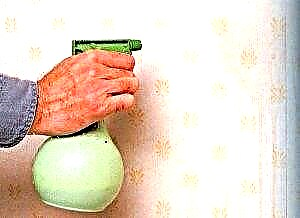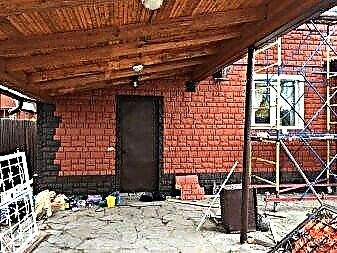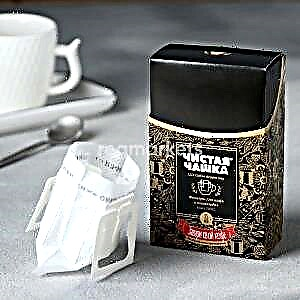 Wall cladding with MDF panels is an affordable and easy way to decorate living spaces.
Wall cladding with MDF panels is an affordable and easy way to decorate living spaces.
Finishing material has a decent attractive appearance, has excellent heat and noise insulation properties, and DIY installation of MDF panels is not very difficult.
Wireframe method
The essence of the method is to fasten the MDF tiles to the pre-constructed crate. It is used in several cases:
- the surface of the wall is uneven and there is no way to eliminate the defect,
- the room needs heat or sound insulation,
- there is a need to hide utilities - wiring, for example, located on the walls.
Finishing materials
The frame method allows the installation of MDF panels on the wall of any form factor - slats, wall panels and decorative sheets. And the appearance of the plate, and the thickness of the panel, and quality are determined not by the installation method, but by the functionality of the room.
The most commonly used rack material, since thanks to the groove-comb joining, its installation is simple and does not take much time.
Sheathing with tile and sheet panels is more difficult, since it is associated with the need to follow a certain pattern.
Plates are available with a thickness of 6 mm for slatted, and from 3 mm for sheet products. For the walls of rooms with difficult operating conditions, it is recommended to choose MDF panels of maximum thickness.
Moisture-resistant MDF panels are used to decorate the bathroom, toilet and kitchen.
Tools and Supplies
- MDF boards - rack, panel, sheet.
- Universal corner from fiberboard - used in the design of corners.
- Insulation for walls - if insulation work is being carried out.
- Rotary hammer, jigsaw, knife.
- Square and, as a rule, kapron thread.
- "Liquid nails" or other glue on wood.
- Wood screws - from 40 to 80 mm, plastic dowels or plugs - for fixing the lathing.
- Nails, clamps with a tongue of the required height, glue - depending on the chosen method of installing the panel.

Preparatory stage
- Since during the installation of MDF panels on a metal frame or wooden crate, walls are not aligned, its preparation is reduced to cleaning from dust and dirt. However, if large cracks are observed on the wall, they should be repaired.
- The wiring is cleaned into pipes from the corrugation.
- With an overall high level of humidity in the apartment, it is recommended that the surface be treated with an antiseptic primer.
With a small sheet thickness of 3–6 mm, this step can be neglected, with a large thickness of 16–20 mm, exposure is necessary.
Production and installation of the lathing
The frame is made from wooden bars with a section of 20 × 40 mm, or a galvanized profile. Both solutions have their advantages.
Moreover, the material requires additional processing with antiseptic agents and does not exclude the possibility of destruction under the influence of moisture.
Metal frame - characterized by high durability and resistance to moisture.
Mounting MDF panels on a metal profile provides a rigid mount, which prevents the extension of the panels. In rooms with noticeable changes in temperature and humidity, for example on a loggia, this leads to distortion of the finish.
Since MDF panels for walls, with the exception of special moisture-resistant ones, also do not differ in resistance to moisture, it is not necessary to build a frame more durable than the sheathing itself.

Installation of the lathing for MDF panels: detailed instructions
Rack slats can be arranged horizontally, vertically or diagonally. Square panels can form a pattern. In any case, the mounting directions of the battens and the MDF panels must be perpendicular to each other.
Most often, vertical installation of decoration is used, since it provides a minimum of waste.
- The most convex place is determined on the wall surface - its height is a control point.
Through the apex of the bulge, the frame rail passes necessarily.
- The recommended pitch is 40-60 cm. With a large sheet size, the pitch can be increased.
- The wall is marked with a pencil.
In this case, it is desirable to place the lower bar as close to the floor as possible: a baseboard is attached to it.
- The first rake is installed in the most convex place.
The bar is placed on the marked line, a hole in the wall is drilled through the bar with a puncher. The hole depth is calculated so that the self-tapping screw is in the main wall by at least 30–40 mm. The mounting step is at least 60 cm.
- First of all, the rail is fixed at the top of the bulge - close to the wall, and then from the opposite end, previously set on the level.
- To check the plane of the bar, a thread is stretched from one to the other end of the wall and fixed on the screws with a level, a match is placed between the cap and thread.
Correction of the rack mounting is carried out using wedges, the thickness of which is determined by the deviation of the mounting depth compared to the control point.
- The blanks for the wedges are cut from the slats and are trimmed with a knife during the course of work.
Pieces of plywood are allowed.
- The second rail, as a rule, lower, is installed in the same way: the ends are fixed by level, and the rest of the mount is adjusted by thread.
- The following frame elements are mounted as follows: the rule is applied to the fixed rails, and the next block is exposed in the plane with the first two.
It is forbidden to mount any objects on the MDF panel. However, it is quite possible to hang a mirror in the hallway if the installation of wall MDF panels is carried out on the frame.
Wall cladding with MDF panels
Sheathing is started after the construction of the frame.
The adhesive composition is applied to the panel in areas of fixation to the crate. Suitable for thin plates,
- Mechanical fastening with brackets, nails or self-tapping screws.
Provides reliable fixation but does not compensate for temperature elongation. The method is recommended for rooms with stable temperature and humidity,
The clip is put on the edge of the panel, and attached to the crate with nails. This is the most recommended option.
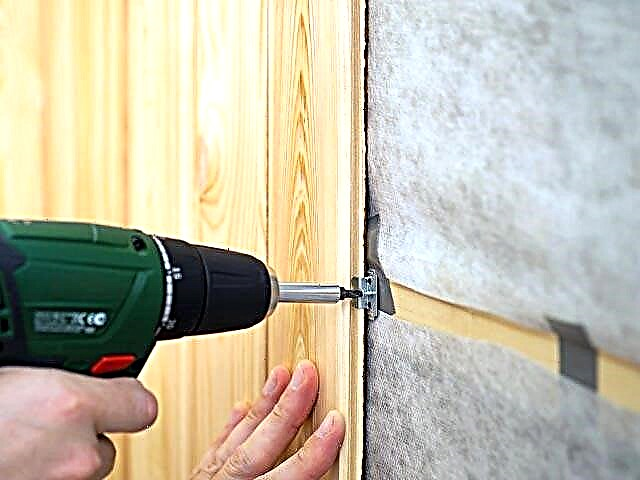
- Slatted lamellas and universal corners are cut lengthwise using a jigsaw or hacksaw. The edges are sanded.
- Installation can be started from any corner of the room.
It is usually recommended to move towards the window: errors in this case are detected faster.
- The first lamella is fixed so that the edge with the ridge is directed to the corner, and the gap between the wall and the plank is 2-3 mm.
On the crest side, the lamella is fixed with screws to the rails, and on the side of the groove, a clamp is put on the edge and fastened. Fasteners when docking is hidden by the crest of the next element.
The following panels are inserted with a comb into the groove of the previous one and are fixed with a clamp.
- The last panel, as a rule, needs adjustment.
The plate is tried on, the required width is determined, the excess fragment is cut off. Then the element is inserted, and in the corner it is also fixed with screws.
- The corners and the top edge are finished with a universal corner.
Design of sockets and switches
When decorating walls with MDF panels in such areas, it is necessary:
- try on the panel and mark the location of the outlet,
- cut a hole of the appropriate diameter,
- fasten two cubes in parallel on the wall so that the future outlet can be installed on them,
- fix the MDF plate to the crate.
Training
Before proceeding with the installation of MDF panels on glue, the surface is cleaned and primed. Most often, a primer with an antiseptic effect is used.
Slatted slats are cut to the desired height, a corner is also cut, the edges are processed with sandpaper. Square panels are adjusted after fitting.
Used adhesives
The adhesive must meet two requirements:
- After drying, maintain some plasticity to perceive the thermal expansion of the material.
- Possess a dense structure, which would allow to apply glue with both a thin and a thick layer. This property makes it possible to qualitatively attach the panel even in cases where the surface of the wall is curved.
Most often, “Liquid Nails” and “Installation Moment” are used, but there may be other options - “MitreFix”, “Moment Crystal”.
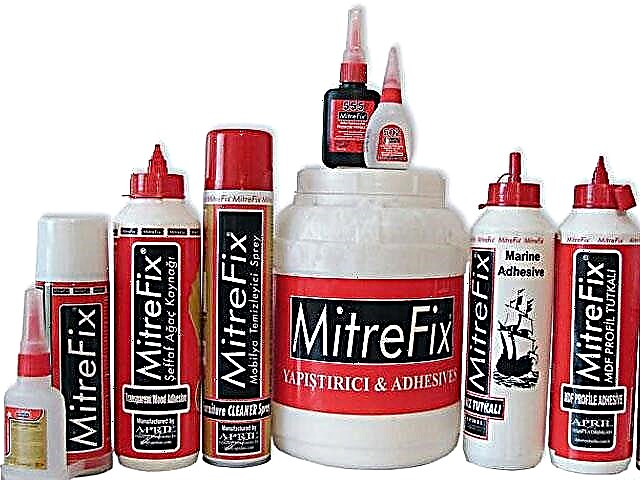
Cladding Installation: Procedure
- Sheathing is recommended to start from the corner towards the window opening.
- On the wall, horizontal and vertical markings are made according to the size of the panels.
- On the back side of the plate glue is applied in zigzag stripes.
- The panel is easily pressed against the wall and immediately removed.
After 2-5 minutes, it is tightly fixed. In this way, a stronger bond is achieved. The first lamella must be checked with a vertical level.
- Laying slabs is done butt or lap.
- In areas where it is supposed to install sockets and switches, holes are pre-made in the panel.
- The corners and the upper edge are closed by a universal corner, the lower - by a plinth.

Finishing nuances: processing joints and corners
A universal corner is used to decorate the corners. It consists of two plates made of chipboard and connected on the front side by a film.
- The corner is cut to the desired length. Docking, if the top edge is being made, is made at an angle of 45 degrees.
- Landing on the adhesive is recommended in two stages: light pressing so that the composition is distributed both on the lining and on the surface of the corner, and then tight with pressure.
- If they still appear, the glue residues are cut off with a paint knife after completely hardening. They are difficult to remove with a cleaning agent or solvent.
In exactly the same way, the joints are finished, if such a need arose. However, in this case, it is necessary to carefully select the element by color.
Finishing MDF boards does not apply to work of a high level of complexity and requires not so much experience as careful implementation.
From the point of view of aesthetics, it is not recommended to trim the ceiling and walls of the room at the same time with plates. Styles that suggest such a solution in urban apartments are not implemented. But for a balcony or loggia this is a perfectly acceptable option.
Features
Natural materials have always been at the peak of popularity, but, unfortunately, their volume is very limited. In this case, the right and effective solution was the use of various production wastes from a natural product, which allows to reduce losses, as well as to obtain attractive and high-quality raw materials.
It was in this way that materials such as chipboard and fiberboard appeared on the shelves of construction stores, and subsequently a fiberboard called MDF.
Similar products have been widely used in the decoration of walls in rooms., they are preferred to use in apartments, for lining bedrooms, kitchens and bathrooms, for finishing office premises, etc. A similar trend is due to the environmental safety of raw materials, reasonable cost, as well as ease of installation, due to which it is possible to fix these products at home do it yourself.


The main components that make up the MDF panels are wood chips and other wastes of this raw material. Special substances are introduced into such a composition and compressed.
The manufacturing technology of the material includes the following processes:
- A thresher threshes wood into elements of a given size.
- The resulting fragments are washed and sieved. As a result, larger chips and various debris are sifted out.
- After this, the resulting composition is processed by steam.
- An epoxy resin is introduced into the finished and refined raw materials and the mass is conducted under a press under high pressure.

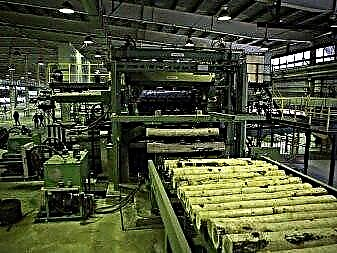
- The resulting sheet material is cut into products of a given size.
- To give a smooth surface to the panel, they undergo a process of grinding and processing with decorative compositions. Work on giving the product visual appeal consists in covering the base of the material with a film, laminating or dyeing. The first option allows the panels to become similar to wood or stone.
In addition, the decorative coating provides products with protection against pollution and moisture, which greatly expands the range of applications.

The positive features of MDF panels include the following properties:
- Environmental friendliness of the material - phenol is not used during the manufacture of products, which indicates the safety of the raw materials obtained.
- Sheathing walls or ceilings is possible without the involvement of hired workers.
- Cutting the material is quite simple, with this task, there is practically no garbage left.
- Today, a large assortment of similar products is on sale, among which there are panels having various colors and textures. Due to this diversity, with the help of products it is possible to realize almost any design solutions not only for small intermediate rooms, such as an entrance hall, corridor or toilet, but also to finish the main living rooms - a hall or a living room.
And the offices decorated with MDF panels will emphasize the good taste and status of the owner.


- Heat-insulating and sound-insulating qualities are inherent in the material, due to which the level of comfort in the room increases.
- The products do not need any specific care, any dirt can be easily removed with a damp rag.
- Since the main raw materials used for the production of products have a low cost, the material itself is of reasonable price.
- Sheathing surfaces can be done in several ways, so in some cases there is no urgent need to level the bases.
Fasteners on the frame will hide all existing defects on the walls.
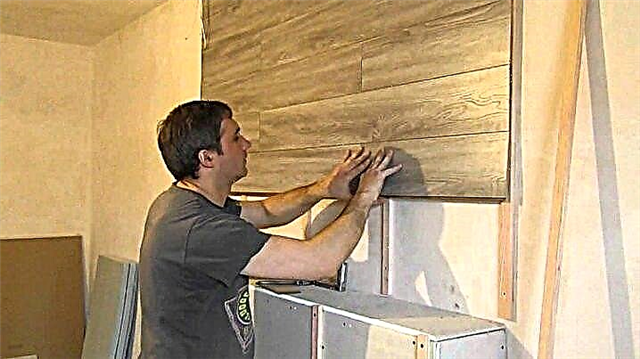
In addition to advantages, some negative qualities are inherent in products:
- the presence of additional coating on the products does not provide 100% resistance of the material to moisture,
- it should be borne in mind that the design will take away some area of the room when mounted on a crate,
- Despite its environmental safety, the products are classified as fire hazardous building materials.


Taking into account the specifics of the technology of production at each individual stage, MDF panels have the following characteristics common to all products:
- material strength varies from 600 to 1200 kg / m3,
- the average strength at break of the product is 0.55 MPa,
- permissible level of leaf moisture should not exceed 10%,
- as a percentage, the level of various additives in raw materials is 10%,
- the thickness of the product varies between 6-40 mm.
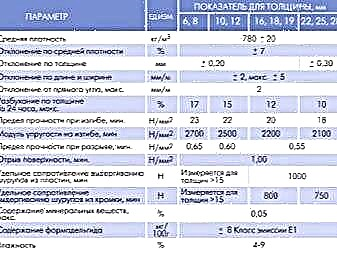

Based on the production method, several main types of MDF panels can be distinguished:
- Moisture resistant products. The material is notable for its high strength indicators, as well as high cost. Such products do not deform even with prolonged contact with water, they tolerate mechanical stresses and loads well. The panels are recommended for use in rooms with high humidity, and in some cases the products are used for external decoration of structures.
- All-pressed products. The material is released by hot pressing the components of the panel. Finished products have a smooth base, the level of strength of the panels is average in comparison with other types.Based on the cost of the product proposed by manufacturers, it can be attributed to economy class products.
- Laminated products. The production process is similar to the method described above. Among the individual features, it is worth noting the ability of the material to repel water, resistance to abrasion, as well as resistance to contact with chemicals. Due to its features and durability, products can be installed not only indoors, but also outside, but they are not suitable for constant contact with moisture.

Taking into account the variety of external design of rails, products can be classified as follows:
- Veneered panels. They differ in similarity in texture and color with natural wood. To achieve this effect, the outer side is covered with a veneer layer of about 3 mm.
- Glossy. They have a laminating film layer. Due to its presence, the material acquires a brilliant appearance and resistance to moisture.
- Painted panels. For work, a special composition is used, which sets the necessary shade and hides possible unevenness of the base.
Painted products can be either matte or glossy.


Given the differences in product density, manufacturers distinguish the following types of material:
- HDF - where the value exceeds 800 kg / m3,
- LDF - density is 200 kg / m3 and higher.
The front surface of the panels can be milled or flat.
Focusing on covering opportunities, the material is divided into the following types:
Scope of application
MDF panels have found their application in several industries at once. These include furniture production, the construction sector, with the help of products, you can mount partitions, arches, etc.
The following types of work can be distinguished where this product is in demand:
- manufacture of door leafs,
- roof sheathing device,
- manufacturing window sills,
- panels are used to protect screens for ventilation and heating devices,
- products are used for suspended ceilings and floor coverings,
- in the course of wall decoration.
Preparatory work
In order to determine the amount of material required for the design of the bases, certain measurements should be made - measure the width of the walls. Since the panels are available in various sizes, having decided on a specific type of material, the wall width should be divided by the same size of one product.
However, even properly organized work can be associated with various damage to the facing products, so it is best to purchase a little more material.

The preparatory process preceding the installation of MDF panels on the frame includes the following complex of works:
- In order to fix the products on a wooden or metal frame, alignment of surfaces is optional. In this case, it will be enough to clean the walls of dust and dirt. But serious defects require mandatory termination.
- All wiring that is available in the room is hidden in corrugated pipes.
- If you plan to lay the material in rather humid rooms, the walls should be pre-treated with an antiseptic primer.
Preparatory work that precedes the installation of products on glue comes down to the mandatory cleaning of the base, after which the walls must be primed.
Slatted panels are cut according to the height of the walls, corners are cut, the edge is processed with an emery cloth.
If you plan to glue square products, their size is adjusted after fitting.
How to fix it?
The choice in favor of a particular method of installing such products is based on the condition of the walls, as well as the specifics of the room and the conditions in which the material will be used in the future.
The frame mounting option is reduced to the installation of slats on a specially equipped crate.
There are a number of recommendations regarding when to prefer just this way of working with MDF panels:
- if there are serious defects on the wall that cannot be fixed,
- when there is a question about the need to provide sound insulation and thermal insulation,
- you need to hide various communications under the decoration, for example, wiring.


The frame can be made of wooden beams or galvanized profiles. Each option has positive and negative features. The wooden structure does not need a large number of fasteners, it can be attached with screws, in addition, the raw materials have similar characteristics in terms of moisture absorption as the finishing material itself.
The crate needs additional treatment with antiseptics, as it is susceptible to moisture.
The metal structure stands out for its long service life and moisture resistance. In addition, the metal frame guarantees a more reliable and rigid fastening, which is important in humid rooms, where the panels can deform and lengthen.
But the construction of the crate, which will be many times more durable than the finish itself, is impractical.


Fastening products can be carried out both horizontally and verticallyIn addition, to create a specific pattern, some specialists install the products diagonally. Regardless of the chosen installation direction, the frame rails and panels should be perpendicular to each other.
The most common is vertical installation, since during this work there remains a minimum amount of waste after cutting products.
After the construction of the crate, you can proceed with the installation of the panels.
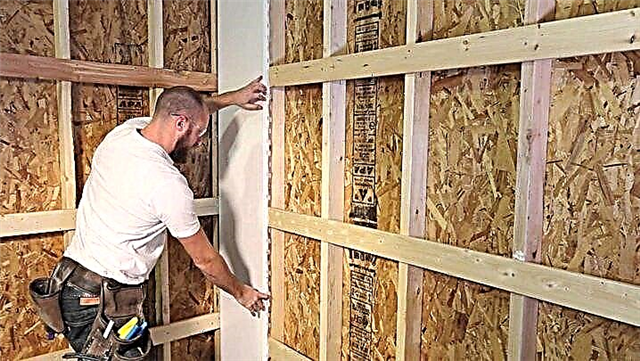
The following cladding features are distinguished:
- Panels can be glued - in this embodiment, the composition processes the products in those places where they will be fixed with the frame. This method is relevant for products with a small plate thickness.
- Mechanical fastening using hardware - this option will be acceptable for rooms with a stable temperature and normal air humidity.
- Fixing the elements with clamps - the essence of the installation is to put on a clip on the edge of the rail and connect it to the frame using nails. This method is most in demand.
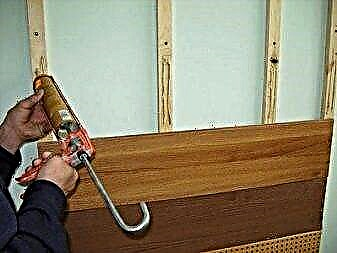

Installation is carried out in the following sequence:
- The panels are adjusted in length, the edge of the products is sanded.
- It is best to install towards the window opening, if any.
- The first bar is installed in such a position that its edge with the ridge is directed to the corner. Next, the panels are fastened to the frame guides, a clamp is put on the edge.
- The following panels are fixed with a comb in the groove to the previous element. Corners and the top edge are made out by a universal corner.


The frameless method is chosen only when the bases in the room have a perfectly flat surface.
Installation involves the following steps:
- you need to start work from the corner of the room, moving in the direction of the window,
- Before mounting on a concrete or any other surface, markings must be made on it, corresponding to the dimensions of the facing material,
- for high-quality gluing, the adhesive composition is applied to the back of the product with a zigzag, after which the element is pressed against the wall and immediately removed,
- after a few minutes, the product is already finally pressed to the surface,
- installation can be done both end-to-end and overlap,
- corners and edges are covered with skirting boards or corners.

Tips
In some cases, choosing MDF panels as the finishing material, work on additional insulation of the bases should be performed. Such work can be carried out using foam and polyurethane foam or using silicone compounds.
In addition to thermal insulation, the presence of special materials inside will provide protection against the formation of condensation in the voids between the base and cladding and will reduce the risk of pests in the material.
In the summer, with this finish, the heat input to the building will decrease, and in winter, on the contrary, its outflow from the inside will decrease.

Choosing a frameless installation option for panels, it is worthwhile to carefully choose adhesive compounds for installation work.
Products must meet the following requirements:
- It is distinguished by ductility, since the products are subject to thermal expansion during operation.
- The glue should have a dense structure, which will allow you to adjust the level of its application. A similar feature will allow the lamella to be fixed even on a strongly curved base.


Beautiful examples
For the bathroom, even of small sizes, a special role is assigned to the home - to help a person relieve fatigue at the end of the day or to fill up with vivacity in the morning. Warm glossy shades of panels in combination with mirrors and glass will help the inhabitants of the home recharge with a positive mood from the surrounding atmosphere of comfort and warmth in the interior.

In some rooms there is a need for zoning. In order not to pile up the area with various niches and partitions, the decoration of a certain area of the walls with decorative panels imitating a wooden base can serve as a great alternative. The contrast of the shades will allow you to highlight a specific area and correctly place accents in the interior.
Balconies and loggias are part of the home, often acting as a continuation of the room. Facing MDF wall products that mimic the expensive finish with natural materials will help harmoniously combine these two rooms. The contrasting alternation of light and dark battens will emphasize the geometry of the room, as well as add expressiveness to the interior.

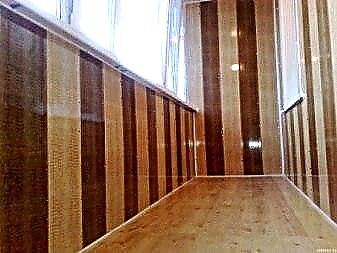
You can find out how to install MDF panels on a wall from the video.
Panel Views
The main difference between the panels can be the features of their manufacture. They can be divided into several types.
Normal (they are also called solid-pressed) - are sheets of wood fibermade by dry hot pressing. The surface of the sheets is not processed, but very smooth due to the fact that the fibers are very small and tightly pressed against each other. But in color they are completely heterogeneous, inclusions of fibers of different colors are visible, since all kinds of residues after processing the wood go to their manufacture. And the shade of plates from different parties may vary slightly. This type of panel can be processed or used as is for decoration of non-residential premises.

Special - differ from ordinary ones in that they use a higher grade of wood for their production, and they are pressed longer and at a higher temperature.
These include several types of panels.
- Moisture-resistant - comparable in their properties to plastic, since it is in no way affected by a humid environment.
- Heat resistant (i.e. resistant to fire). Unlike other fire-resistant materials, instead of phenols and resins, they contain paraffin and lignin, which are not toxic. These include products marked KM1 and KM2.
- Flexible - have more ductility to create bent and arched structures. They can be single-layer and two-layer.
- High density (such as kronshpan) - withstand heavy loads.
Any MDF panel for wall cladding can have a coating that not only gives it a certain aesthetic appearance, but also to various degrees serves as protection against environmental factors.
As a decorative coating can serve different materials.
- Film or plastic (melamine, PVC). In fact, plastic is a film of greater thickness. Laminated in this way the material can look almost anything: imitate any natural material (stone, wood), be glossy or matte, smooth or textured, plain, colored or with a pattern (pattern). Laminate may have a holographic or 3D effect.
- Veneer - a thin layer of wood, specially processed - a high-quality product made of veneer based on chipboard is practically no different from a solid panel. However, it is this coating that provides the least protection against moisture or scratches. The veneer is painted in almost any woody shade and has the appropriate texture.
- Enamel or any other suitable type of paint - less durable than plastic, but in case of damage it can be repaired locally or replace the painted layer with a new one completely. The coating is monophonic, but the choice of shades is huge.
How to cut?
During the installation process, situations happen when building materials need to be customized to the desired size. Yes, and to install the first panel, you need to cut off part of it (comb). According to experts, cutting MDF products is practically no different from cutting wooden products.
Some difficulties may still arise during this process.
- The edge along the cut line may crumble.
- The film coating may peel off or wrinkle under the influence of tools. Especially if the adhesion to the panel itself is poor.
- The glossy surface is very easily scratched, therefore it requires special care.
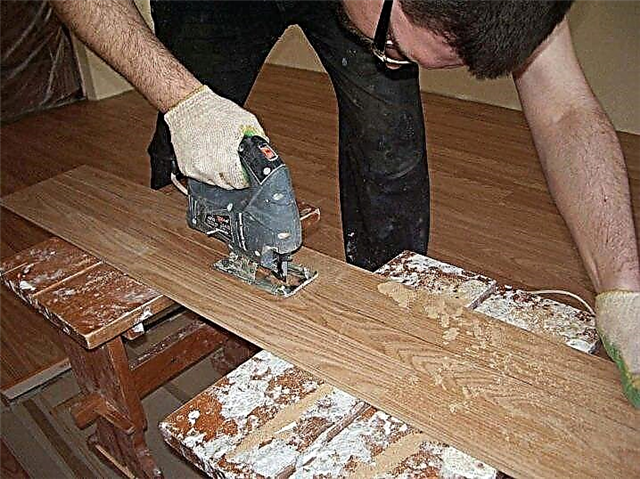
If you are afraid not to cope and spoil the products, you can purchase the products of the desired format or contact a specialized organization (for example, a furniture workshop), where they can help you for a fee.
For cutting with your own hands, you need to make markings. For the calculation to be correct, you will need: a ruler, square, roulette, level or laser level. We draw the cut line so that it can be easily erased. At the same time, the decorated side should not be below so that there are no scratches on it. We lay it on a workbench, securely fix it and proceed to cutting. To make the cut more even, it can be glued with tape, or the tool can be guided immediately along the pressed bar.

The main debate is about tools. You can use any tool used for this purpose in the woodworking industry.
To do this, fit:
- hand saw (both wood and metal),
- jigsaw (regular or electric),
- a circular saw,
- milling cutter.
A large constant amount of work in order to save time and effort is best done with power tools. One-time work can be done manually. The main thing is that the teeth of the nozzles should be small. We start from either side, we conduct the saw smoothly, without jerking. Small chips and irregularities on the film can be cleaned with sandpaper.


How to install?
There are two main ways to mount MDF wall panels:
- stick
- to put on a metal or wooden frame.
In the first case, an adhesive suitable for working with wood products is needed. They can not only glue, but also align the recesses in the places where the screws are screwed in. The glue may be colored or transparent.
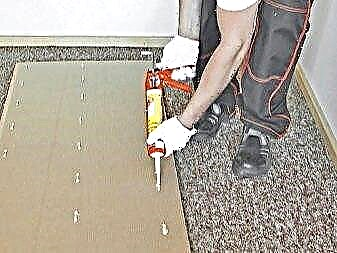

In the second case, a wooden crate or a metal structure is applied to the wall. The advantage of wood is ease of installation, environmental friendliness and the use of fewer hardware and fittings. But wood will cost more than metal, so this method is less affordable. Installing a metal frame has its own difficulties - it requires a certain skill and the acquisition of special tools.
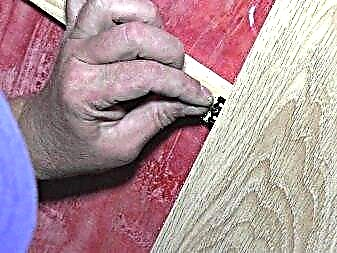

Let's look at the process of fixing wall panels from MDF to the frame base in more detail.
- The working wall needs to be prepared. Remove baseboards and switch boxes and sockets. Take care of the output wires for outlets that will be located on the panels. Damaged wall finish must be cleaned to the base.
- The wooden slats or bars that you will use must be pre-treated to make them resistant to fungus, mold or pests.
- Additionally, you need to take care of the fasteners of the slats to the wall. For wood, you can use self-tapping screws or dowel nails.
- We start with angular vertical rails. They are placed in pairs to form an angle. Having made the marking, we drill holes in the wall under the hardware (with an average step of about 7 cm) and lay plastic nests from the screws in them.


- We attach the rail to the wall, transfer the marking to it and drill it, connect it to the wall.
- Horizontal parts are mounted in the same way.
- Door and window openings deserve special attention. Reiki is fixed along their perimeter, regardless of whether they have a step mark or not.
- The evenness of the vertical rails and cross members is checked using a level or plumb line. Irregularities at the joints of the rails must be ground with a plane.


The technology of mounting a metal frame has its own characteristics.
- The process itself is similar to installing a wooden one. However, for a metal structure, CD profiles and UD guides are needed.
- In the vertical racks (UD), CD profiles are inserted and retracted to the desired location.
- Then we drill holes in the wall by analogy with wooden logs. For fastening to the wall surface, long screws are used. And among themselves, the profiles are connected short. Connectors (also called ears) are needed for a CD profile.

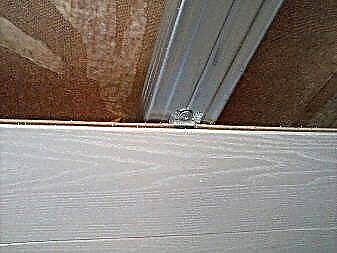
After installing the frame, the installation of the panels begins.
- You should start from the corner. A panel with a sawed-off crest is placed first, and the next one is attached to it using a lock, in which the crest of one workpiece is combined with the groove of the other.
- The panels are fixed with small nails (if the frame is wooden) or brackets-clamps (if metal).
- To attach the last two panels correctly, the last one needs to make the ridge less wide. Then connect both at an angle and click on them, straightening the connection.
- The last workpieces should be tightly moved to each other and fixed with screws to the frame.
- Slots in the corner, as well as between the wall and the floor (ceiling), are closed with the help of corners and decorative baseboards (they can be glued).
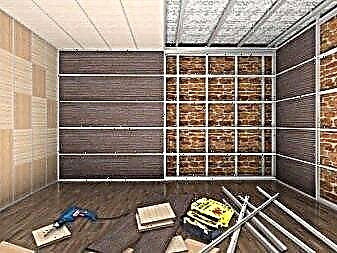

What is MDF panel
First, let's say a few words about the material itself, in order to better understand its purpose and scope.
 MDF panel before installation
MDF panel before installation
- The photo shows the simplest version of the MDF panel. Before you sheet material, consisting of two parts. The first is a base made from compressed wood fibers. They are bonded together by adhesives. In fact, this is an ordinary fiberboard, but with some differences.
- The second part is a layer of lamination, a waterproof film, which depicts the texture. It is she who completely determines the appearance of the panel.
- The format of MDF panels is possible in different ways - long, short, in the form of strips and even shields.
 The walls are veneered.
The walls are veneered. - Externally, MDF resembles wood paneling - there were no other drawings in practice. However, the choice before you will still not be small. For clarity, you can consider the following photo.
 Assortment of flowers for the home
Assortment of flowers for the home - Depending on the type of panel, the method of installation is different. The most common is a tenon groove mounting system. The panels are inserted into each other and simultaneously attached to the base on metal staples or screws.
- MDF is mounted on a wooden frame. This allows you to quickly and accurately sheathe them without preparing the walls. Under the panels, you can place insulation layers, various communications (heating radiators, electrical wiring, water pipes) and align significant differences in the base plane.
- Separate panels are mounted by glue - it is required to prepare a perfectly even base for them, for example, plywood or gypsum plasterboard.
In which rooms are MDF placed
To accurately determine the purpose of the room in which the MDF can be installed, you need to find out the properties of this material.
 Panels are protected by lamination on all sides.
Panels are protected by lamination on all sides.
- The main enemy of MDF is humidity. Material in contact with water begins to actively absorb it. This leads to swelling of the base and peeling of the lamination. Immediately the appearance of the product deteriorates, microorganisms begin to multiply on it.
Interesting to know! There are moisture resistant varieties of MDF. This is a more expensive solution. Laminated film they are closed on all sides, and also have a special impregnation. They can be used in wet rooms, but direct contact with water is also undesirable.
- The material contains formaldehydes that are harmful to human health. Especially it is a lot of it in cheap grades with which counters of the Russian shops are filled. Because of this, it is better not to put such decoration in living rooms.
 How can the walls be decorated in the hallway with MDF panels
How can the walls be decorated in the hallway with MDF panels - The search circle has narrowed. MDF panels should not be installed in bathrooms and kitchens. The second option can still be considered if the panels are located away from the sink and gas stove.
- It is also not recommended to use them in bedrooms and other living rooms.
- A suitable place for them is utilitarian premises, offices, public places. The decoration of the corridor with MDF panels will fit well into a private house. In the apartment they can be installed on the balcony or in the same hallway.
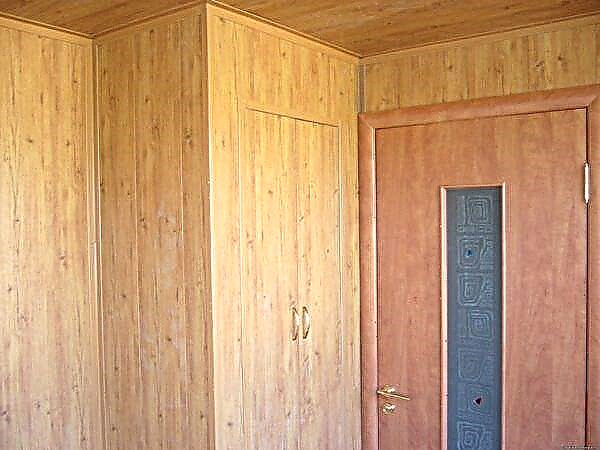 Decoration in the hallway with MDF panels
Decoration in the hallway with MDF panels If you buy high-quality material, then the panels can become a wonderful accent spot in the interior of the living room and even the bedroom.
Work tool
Let's start with the preparation. The first thing we need to provide is a tool. The set is simple, but large enough:
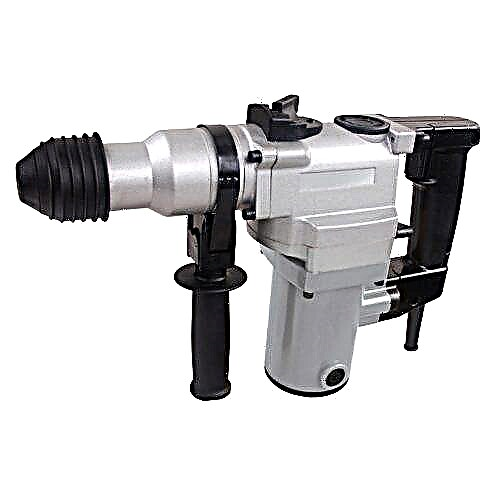


Important! If you plan to install a metal frame, it is better to use more accurate tools. The bubble level gives errors, therefore, we use it only when working with wood, since it is almost impossible to set it up anyway.

We also note the following devices:
- Stationery knife - helps to print packs with panels, cut the fringe at the edges, make marks on the laminated surface.
- Hacksaw for metal - needed for cutting fragile, bending decorative corners.
- Hammer - the edges of the panels that will be hidden under the corners are conveniently mounted on nails.
- Stool - use as a stand during cutting materials.
- The stapler is construction - it is also possible to attach panels to it, if there is confidence in the evenness of the frame.
- Miter box - allows you to cut corners clearly at 45 degrees.
- Mounting glue gun - the corners are glued to the "liquid nails". This glue is sold in plastic tubes, from which it is squeezed out by a gun, as in the photo below.
 Mounting glue gun
Mounting glue gunOther tools can be adapted for work. We will also mention some of them in the installation section.
Installation of the wall frame
We start with the crate. Frame belts are installed perpendicular to the direction of the MDF sheathing. Usually this direction is vertical, which means we twist the slats horizontally.
 Assembled crate on the wall with a window opening - the room looks sad
Assembled crate on the wall with a window opening - the room looks sad
- Here is the first photo from the object. As shown, the wall is very curved, and its repair was done in the distant Soviet past. One cannot speak of any evenness of the foundation. Here is what has been done.
- Crate belts were installed (the rail was screwed onto the 60th and 70th wood screws), two main horizontal window openings that will help form slopes (these parts are placed with long belts in one plane).
- Billing happens like this. First, the most protruding part is determined by the level - usually this is the top or bottom of the wall. Then in this place is attached the first rail, previously trimmed in length.
- A kapron thread is stretched along the outer corner of the belt - along it we trim the rail, laying in the right places the blocks chopped from the rail. You can take any other linings. If the difference exceeds 3 cm, then it would be more reasonable to put direct suspensions.
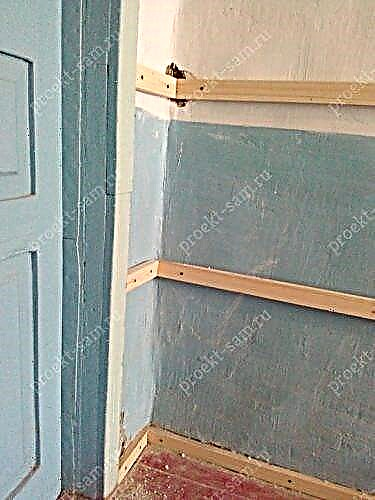 Inside corner of the lathing
Inside corner of the lathing - Next, the opposite rail is placed in the same manner. When exhibiting it, first of all, we focus on the vertical level.
Advice! If your level is short, use it in conjunction with a rule or level rail of the desired length.
- The base frame of the first wall is ready. Next, we fasten the intermediate belts, breaking the wall into segments of 50-60 cm, but no more.
- When passing curves of places, like the inner corner, which is shown in the photo above, you can slightly knock down the plaster, if possible. Parts in the corners are placed in one line and are closely adjacent to each other.
 Checking the evenness of the crate
Checking the evenness of the crate - The middle belts are much easier to expose. An even rail applied to already aligned elements will help. Again, we put the cubes as needed.
Attention! The linings are always made on both sides of the fastener, since the belt will be skewed when tightened. The supports should not only be slipped, but “liquid nails” attached to the belt on small cloves or glue. The fact is that the tree will dry out over time, and there is a chance that the bar will fall out, weakening the strength of the frame.
Attention! No need to center the grill in height, you will still have skirting boards installed. It is most correct to deviate from the top edge of 10 cm, then set aside the height of the grill plus 3 mm, and leave the rest as is.
- A slightly larger niche is needed so that the grill fits successfully in the opening. The same rule applies to width. At the object under consideration, this principle was not useful, since the purchased lattice is needed for adhesive mounting.
 Frame for interior decoration of walls with MDF panels
Frame for interior decoration of walls with MDF panels - This image shows how to go through openings and outside corners. Look at the door on the left. There is a main vertical, which forms the angle of repose. The crate belts come close to it and are tied to corners and screws.
A large rectangular opening in the middle of the room does not need such details. Reiki from adjacent walls just converge into a corner and are pulled together by hardware. At this point, when setting the level check is strictly required.
Separately, it should be said about the installation locations of switches and sockets - around the boxes, it is also required to put a crate.
We advise you to watch the video: the assembly of the frame under the MDF panel.
Ceiling frame
We proceed to install the lathing on the ceiling. If the MDF will be mounted on it.
 Ready-made frame for covering the ceiling with MDF panels
Ready-made frame for covering the ceiling with MDF panels
- When the wall frame is assembled, its upper belt must be installed at such a height that it is below the ceiling. And it is better to make sure that he acts as a guide for setting the horizontal crate.
- To do this, around the entire perimeter of the room, the belt is attached at a horizontal level. For exhibiting, a water level or a laser maker is used. You can go the other way - use a wider rail, on which then mark the line of the ceiling frame with a dyeing thread. In this case, the master used the first method.
- You can also use a metal profile for drywall PPN 27 * 28 as a guide.
- The ceiling lathing belts are installed - the slats are wound up and placed on the upper wall belts. Then they are placed in increments of 50-60 cm.
- We fasten the parts along the edges to the main ceiling on the suspensions. Also, the suspensions rotate in the middle every 70-80 cm. We bend their ears temporarily to the sides.
- Then we press the belts to the ceiling and fasten them to any of the suspensions. We pull the kapron thread across for reference and release the slats one by one, exposing along it, immediately fixing it completely on the screws.
- After complete alignment, the belts are attached to all direct suspensions mounted above them.
On this work with the crate ends, go to the casing.
Installation of MDF panels
Unpack the first pack and check the integrity of all panels. If a fight is discovered, you don’t need to get upset - there will be many places where the trimmings will go.
 MDF panel layout
MDF panel layout
- Measure the height of the wall. If the ceiling belts do not adjoin tightly to the wall ones, then you can take a larger size, then slipping the panel between the specified parts.
- We lay MDF horizontally - for this it is convenient to use two stools. We postpone the resulting length on the tape measure and put the mark with a pencil. To obtain an even cut, we use a square for marking. It is better to note the reverse side - so there is less risk of damaging the lamination.
 MDF panel cutting
MDF panel cutting - Directly on the received line, cut off the panel. If you want to speed up, you can cut 2-3 pieces at a time - in this case, you get a certain difference in lengths, but it's not scary. See that the power of the jigsaw is enough for such a load, and the file does not burn out.
 Leveling the first lamella
Leveling the first lamella - Sheathing always starts from the corner - better than the inside. We attach the first panel and rest it in the belts of the adjacent wall. If you set the frame correctly, then the part will immediately stand on the level. Just in case, we recheck and make adjustments if necessary.
- For alignment, you have the following options - slightly extend the desired angle, or partially cut off the edges at the junction of the rails to the desired level.
 Fixing the panel to the Kleimer
Fixing the panel to the Kleimer - The panel is ridge to the corner, and the groove out. A kleimer is inserted into the groove, as shown in the photo above. There are three holes in this bracket - the central one is for self-tapping screws or nails, and the side ones are for staplers.
- In our case, the master chose self-tapping screws as the most reliable solution. Fasten in such a manner MDF to all possible belts.
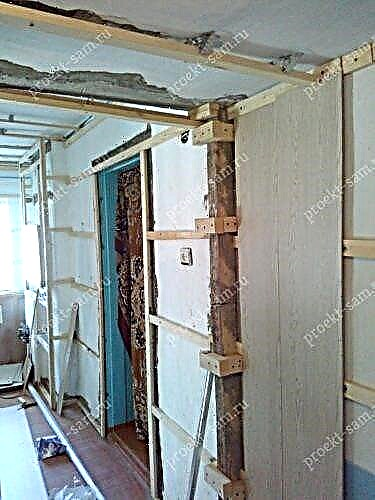 Panel fastening in a row
Panel fastening in a row - The second lamella (as well as each subsequent one) is inserted with a comb into the groove of the previous panel. Thus, the Kleimer hides and this side is fixed. It is necessary to drive the parts all the way, but do not use a hammer for these purposes, unless through a spacer.
Thus, sheathing is carried out around the perimeter of the room.
How are obstacles
It is easy to sheathe a smooth wall, especially if working together - one cuts the panels, and the second fastens them. Only these walls are few, and with door and window openings, radiators and other obstacles a lot. Here's what you need to do when passing them.
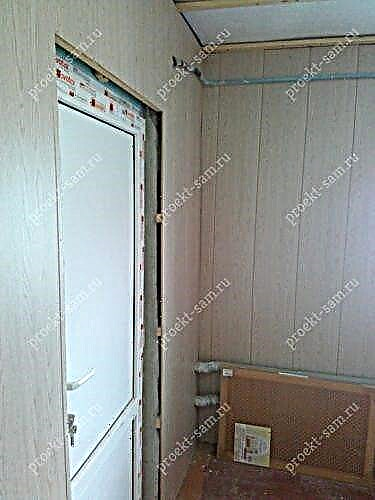 Door and pipes passed
Door and pipes passed
- The photo shows that the master had to go around the doorway, gas pipe and heating pipes. In the first case, l-shaped cuts are made in the outer panels, and the upper panels are cut in height (their lower edge is best fixed to nails). Mark such cutouts in place, after inserting the panel into the groove.
 Gas pipe outlet
Gas pipe outlet - With pipes everything is more complicated. It is difficult to even cut them off.Very often, when creating rounded cuts in MDF, the saws do not withstand heat and burn out. Be sure to stock them up for the future.
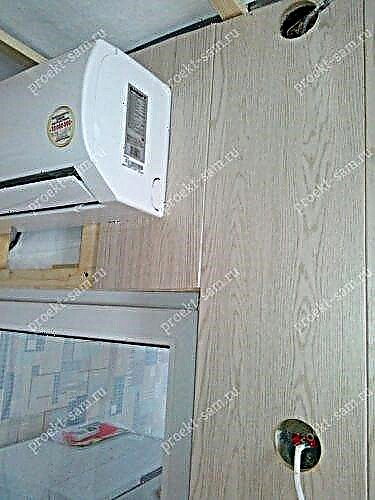 Air conditioning, junction box and switch
Air conditioning, junction box and switch - On the way also got air conditioning. We did not outweigh it, because we do not know how to do it, and the owners spared money to call the master. As a result, I had to bypass him. A little hack, but in the end everything turned out very nice.
- Also visible are openings under the boxes of electric dots. They are made immediately in the course of plating with a screwdriver and crowns on wood.
Designs for radiators are sheathed similarly. You can use many different scraps here.
Ceiling lining
We will not write much about the ceiling, since the work is proceeding on the same principle. We only note the following.
 Joint for ceiling panels
Joint for ceiling panels
The length of the MDF panel is 275 cm. The ceilings are often much larger, so you have to connect the lamellas with the ends (this can also be on the walls). To do this reliably, the position of the belts must be calculated so that the edges fit exactly on the center of the rail, as shown in the photo.
Separate panels can be joined at the expense of end grooves, but such seams are still noticeable, and are also covered with decorative strips.
Masking corners and joints
Having installed all the panels, you will not see the beauty yet, as untidy seams will spoil the whole picture. We carry out the final touches.
 Cutting a decorative corner
Cutting a decorative corner
- Accuracy is important in this work. The corners of the room need to be decorated only after the installation of floor skirting boards. We measure the height of the corner and carefully cut it with a hacksaw for metal.
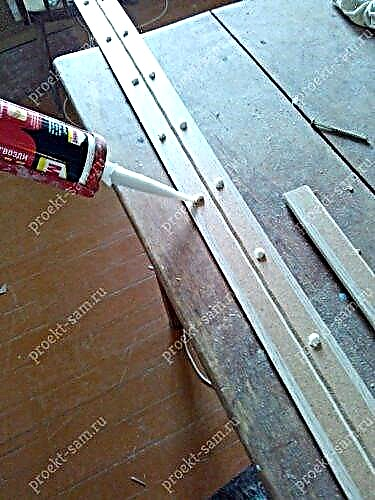 Glue application on a corner
Glue application on a corner - We lay the part on a flat surface with the back side up, and apply glue to it. This can be done with a dotted or wavy line.
 Glued corners decorate the room
Glued corners decorate the room - Gently apply the element to the seat and press down. Wipe out any excess glue immediately with a dry cloth. The corner can be additionally fixed with masking tape.
- If the corners are placed as a ceiling plinth, they will have to be joined at 45 degrees - for this you need a miter box.
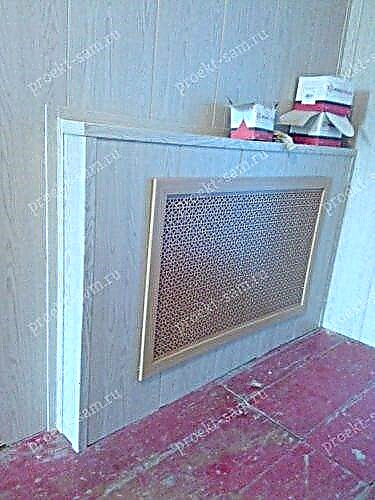 Closed battery MDF panels
Closed battery MDF panelsThe radiator box is passed in a similar way, a decorative grille is installed. This is where the work ends.
Pay attention to the video: installation of MDF without a frame.

